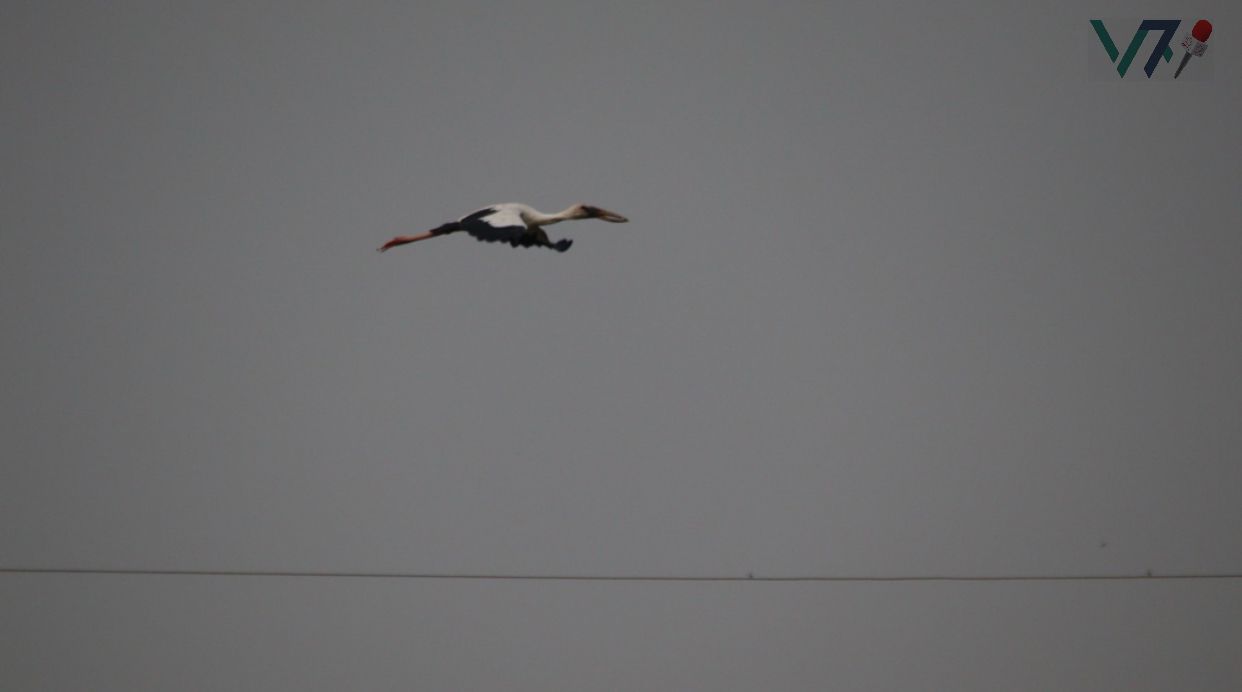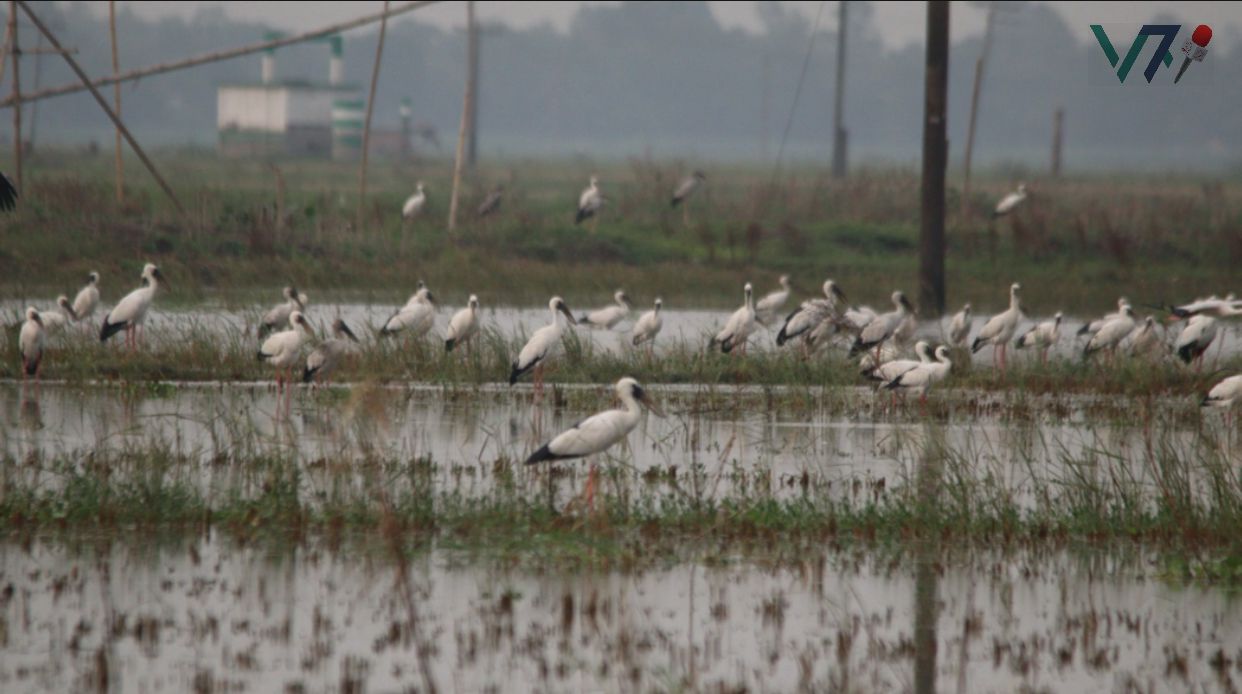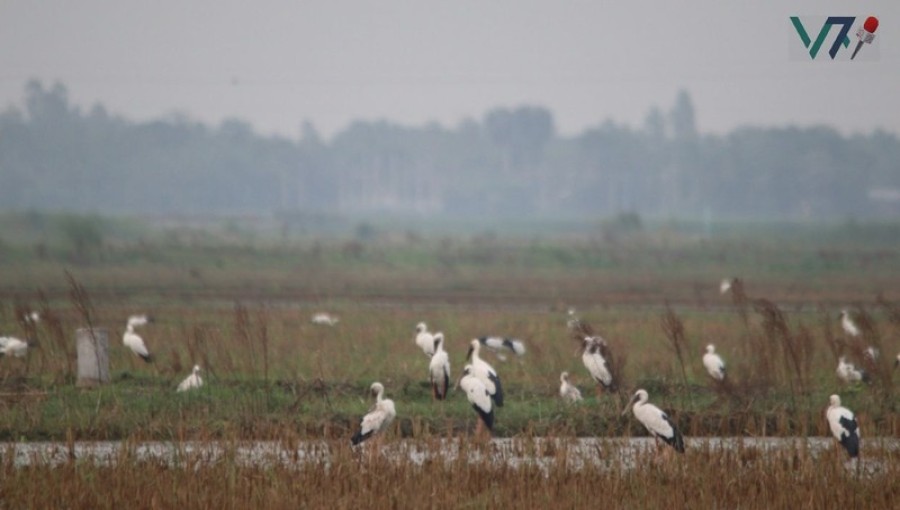Pabna's Chalan Beel has recently become a haven for the Shamukkhola birds, a stork species. These birds, which were rarely seen in the area a few years ago, now roam freely around the wetlands, creating a mesmerizing environment.
Chalan Beel June 22 - In the Chalan Beel area of Chatmohar Upazila, Pabna, Shamukkhola storks have been freely roaming for several days. These birds, with their white bodies and black-tipped wings, are creating a mesmerizing environment as they move around the wetlands and nearby water bodies. This increase in Shamukkhola birds is attributed to the availability of sufficient food, habitation, and breeding facilities in the region.

Locals have noticed hundreds of Shamukkhola birds frequently near the water bodies in Chatmohar. When these birds flock and fly from one place to another, it creates a breathtaking sight. They have made their homes on the high branches of trees near the wetlands, where they rest at night.
The Shamukkhola stork, scientifically known as Anastomus oscitans, belongs to the Ciconiidae family. This large water bird, also known as the Asian Openbill, can be found not only in Bangladesh but also in India, Sri Lanka, and various parts of South and Southeast Asia. The bird's white body, with distinctive black wingtips, makes it easy to identify.
These birds prefer to stay in one area if they find sufficient food and security. They leave their nests in the morning in search of food, which includes snails, mussels, frogs, crabs, and other small aquatic creatures.
Siddiq Milon, a YouTuber from Baluchar neighborhood of Chatmohar Municipality, mentioned that the presence of Shamukkhola birds enhances the beauty of the Chalan Beel area. "Previously, these birds were not seen in this area. Now, they can be spotted in various parts of Chatmohar, including Beyailmari, Karkola, Gournagar, and Bontor," he said, expressing hope for the future.
However, the unrestricted use of illegal fishing nets, such as China Duari and banned current nets, has led to a decrease in fish in Chalan Beel. Local residents have been harvesting and selling snails and mussels for years, further reducing their numbers. If fish and other aquatic creatures are protected, the population of Shamukkhola birds will likely continue to grow. This requires vigilance from authorities and increased public awareness.
Bird enthusiast Ashraful Alam Helal noted that local awareness has improved, and people are less likely to harm these birds. The administration is also active in preventing bird killings.

In the northern parts of Chatmohar, where there is shallow water, the presence of Shamukkhola birds is particularly noticeable. The proximity to wetlands allows the birds easy access to food like snails and mussels, likely contributing to the increase in their numbers.
Siddiqur Rahman from Gournagar village in Nimaichara Union mentioned that three years ago, these birds were not present in the area. Over the past two to three years, however, the number of Shamukkhola birds has increased significantly. "They make their nests on tall trees near the water bodies and forage for food during the day," he said.
Sujon Ahmed from Karkola village noted the abundance of these birds in the fields this year. People generally do not disturb them, though some curiosity-driven individuals may try to take photos, causing the birds to move away.
Hasan Mahmud, the organizational secretary of the 'Nature and Wildlife Conservation Community' in Pabna, stated that Shamukkhola is a native bird of Bangladesh. "Their primary food is snails, and they prefer to roam near water bodies. If disturbed or deprived of food, they may migrate to other areas," he explained. The availability of necessary food and security in Chalan Beel is likely why these birds are thriving in the Chatmohar region.
END/V7N/BCT/DK/































Comment: